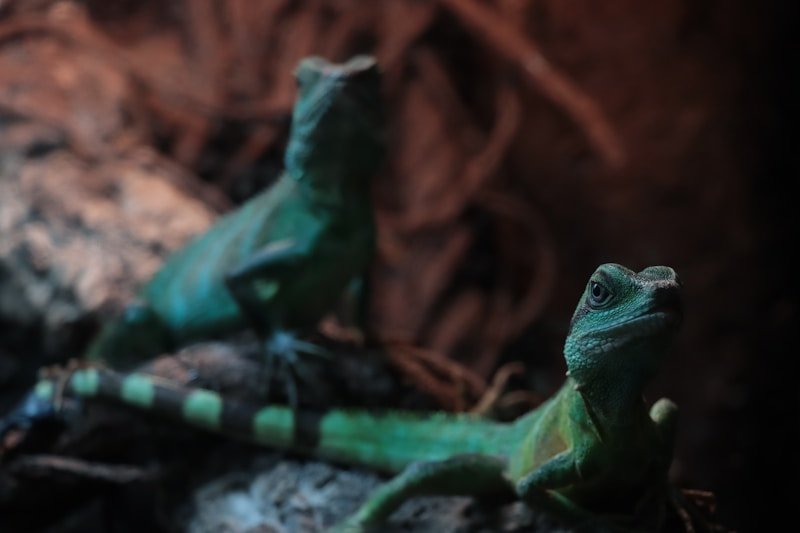Reptiles, often misunderstood or underappreciated, play a critical role in maintaining the balance of ecosystems around the world. These ancient creatures, which include snakes, lizards, turtles, and crocodiles, have adapted over millions of years to fulfill specific ecological functions that contribute to the health and stability of the environment. From regulating populations of small animals to maintaining biodiversity, reptiles provide vital ecosystem services that ensure ecological harmony.
In this article, we’ll explore the important contributions of reptiles to ecosystem balance, focusing on their roles as predators, prey, and their involvement in nutrient cycling and habitat maintenance.
1. Predators and Prey: Reptiles as Key Players in the Food Chain
One of the most significant roles reptiles play in ecosystems is as both predators and prey. Many reptilian species are apex predators or important middle trophic-level consumers, and they help control populations of smaller animals. Snakes, for example, regulate the populations of rodents, which can otherwise become overabundant and cause damage to crops, trees, and other vegetation. By keeping these populations in check, reptiles prevent an imbalance in the ecosystem that could have cascading effects on plant growth, agricultural productivity, and even other animal species.
Reptiles also serve as prey for a wide range of larger animals, including birds of prey, mammals, and even other reptiles. This makes them an integral part of the food web, supporting biodiversity and enabling energy transfer through various trophic levels. Their presence in the food chain ensures that other animals can survive and thrive, contributing to ecosystem stability.
2. Biodiversity Maintenance: Reptiles as Bioindicators
Reptiles also play a critical role in maintaining biodiversity within their ecosystems. Many reptilian species are sensitive to changes in environmental conditions, such as temperature fluctuations, habitat loss, or pollution. This sensitivity makes reptiles excellent bioindicators—organisms that can signal the health of an ecosystem. If reptile populations begin to decline or experience unusual behavior patterns, it may indicate underlying problems such as habitat degradation or contamination, giving scientists early warning signs of ecological stress.
For instance, amphibians and reptiles, particularly in tropical regions, are often the first to be affected by habitat destruction due to deforestation. The decline of reptile species can trigger a ripple effect, potentially leading to the decline of other species dependent on the same habitat. Protecting reptile populations, therefore, is often linked to the protection of entire ecosystems, highlighting their importance in preserving biodiversity.
3. Nutrient Cycling: The Contribution of Reptiles to Soil Health
Reptiles play an indirect but vital role in nutrient cycling within ecosystems. Many reptilian species, particularly herbivores like turtles, help in seed dispersal and plant pollination. Turtles, for example, are known to consume fruits and vegetation, and their movement across different areas helps spread seeds, promoting plant growth in new locations. By facilitating plant dispersal, reptiles contribute to the regeneration of ecosystems and the maintenance of plant diversity.
In addition, when reptiles die, their bodies decompose and release nutrients back into the soil, enriching the surrounding environment. Their carcasses are a source of nutrition for decomposers such as bacteria, fungi, and insects, which further break down organic matter, returning essential nutrients like nitrogen and phosphorus to the soil. This process helps maintain soil health, which is vital for the growth of plants and the overall functioning of ecosystems.
4. Habitat Maintenance: Reptiles and Ecosystem Structure
Reptiles also play an essential role in shaping and maintaining the structure of their habitats. Many reptiles, particularly burrowing species such as gophers and certain lizards, help aerate the soil. Their burrows allow for the movement of air and water through the ground, improving the soil structure and facilitating plant root growth. By digging burrows and creating spaces for other organisms to inhabit, reptiles also enhance the availability of shelter for various species, from insects to small mammals.
In aquatic ecosystems, reptiles such as turtles and crocodiles help maintain wetland health. Turtles, for instance, graze on aquatic plants, preventing overgrowth that could choke waterways, while crocodiles regulate fish and smaller animal populations, ensuring the balance of life in rivers and lakes. By maintaining habitat quality, reptiles contribute to the sustainability of both terrestrial and aquatic ecosystems.
Conclusion
Reptiles may often be overshadowed by more charismatic animals like mammals and birds, but their contributions to ecosystem balance are indispensable. As predators, prey, bioindicators, nutrient cyclers, and habitat maintainers, reptiles perform a wide array of functions that support the delicate web of life. The loss of reptilian species would disrupt not only food webs and biodiversity but also the overall health of ecosystems. By protecting reptiles and their habitats, we help safeguard the intricate systems that sustain life on Earth, ensuring that future generations will continue to benefit from their crucial ecological services.

